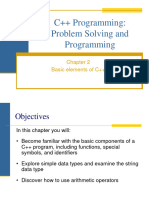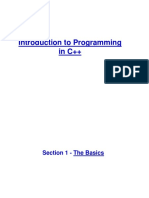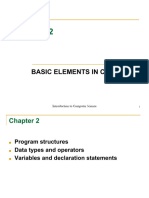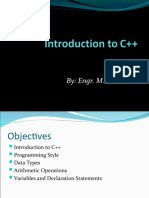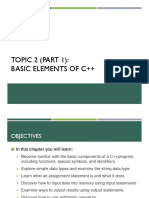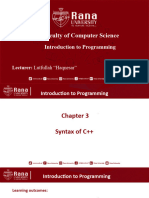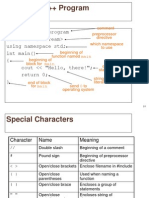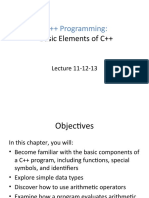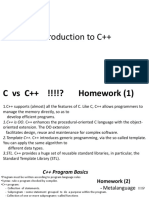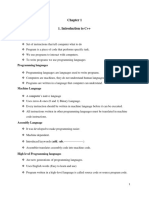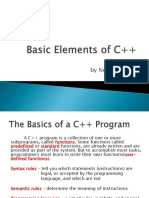0% found this document useful (0 votes)
26 views41 pagesChap02 - Basic Elements of C++
This document discusses the basic elements of C++ programming, including program structure, data types, variables, constants, and statements. It covers preprocessor directives like #include and #define, basic data types like int, float, char, and string, declaring and initializing variables, and arithmetic, assignment, input, and output statements. Comments and proper program formatting are also introduced. The goal is to familiarize readers with the core components of a C++ program.
Uploaded by
lewjw-wm22Copyright
© © All Rights Reserved
We take content rights seriously. If you suspect this is your content, claim it here.
Available Formats
Download as PDF, TXT or read online on Scribd
0% found this document useful (0 votes)
26 views41 pagesChap02 - Basic Elements of C++
This document discusses the basic elements of C++ programming, including program structure, data types, variables, constants, and statements. It covers preprocessor directives like #include and #define, basic data types like int, float, char, and string, declaring and initializing variables, and arithmetic, assignment, input, and output statements. Comments and proper program formatting are also introduced. The goal is to familiarize readers with the core components of a C++ program.
Uploaded by
lewjw-wm22Copyright
© © All Rights Reserved
We take content rights seriously. If you suspect this is your content, claim it here.
Available Formats
Download as PDF, TXT or read online on Scribd
/ 41


